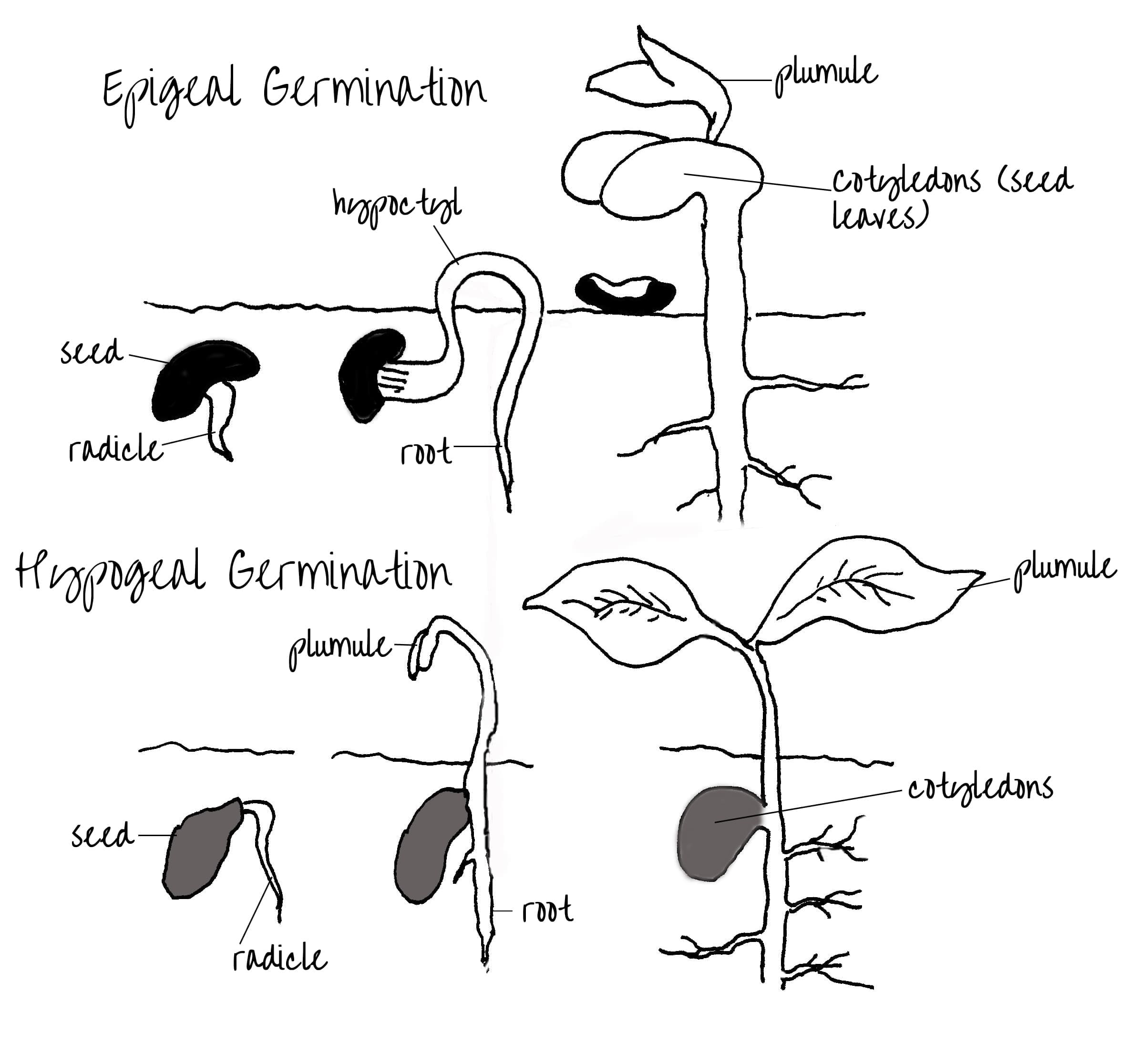In hypogeal germination the epicotyl extends and the cotyledons stay in the ground, whereas in epigeal germination the hypocotyl extends and the cotyledons come out of the ground. (It is where the cotyledons end up that defines the terms – hypo for under and epi for above).
In hypogeal germination the cotyledons provide a food source for the growing seedling, eventually shrivelling up. Thefirst leaves are formed from the plumule and are sometimes referred to as ‘true leaves’. In epigeal germination, the cotyledons become photosynthetic, and are often known as the ‘seed leaves’, the second leaves to form derive from the plumule. Phaseolus vulgaris is an example of a plant that has epigeal germination. Vicia faba is an example of a plant that has hypogeal germination.

You can see a lovely time lapse of Vicia faba germination here (by Neil Bromhall):
http://www.youtube.com/watch?v=9wWNUewPaP0
This page is part of our 6-week RHS revision email series. If you’re currently revising for exams, join our list to ensure you don’t miss any new material or updates.

Simplified one